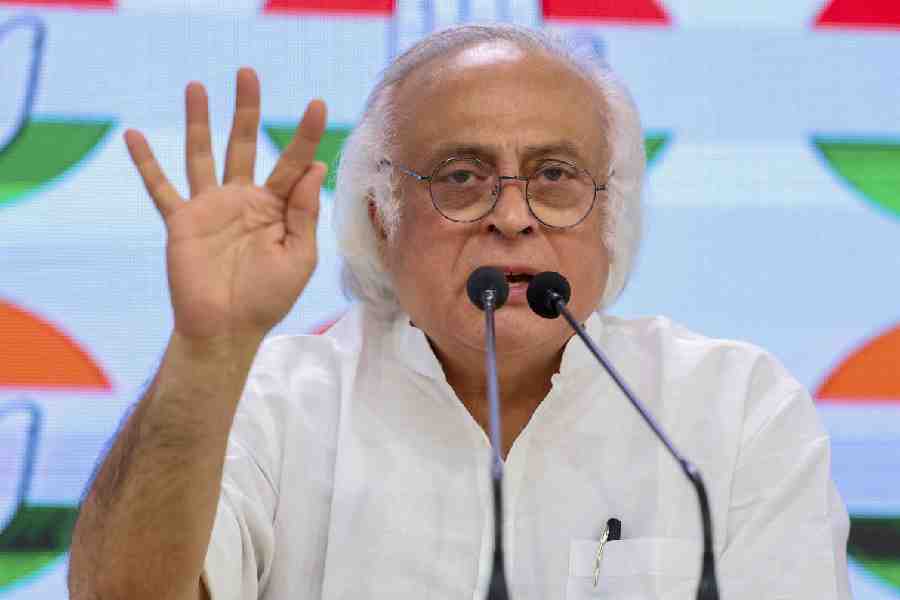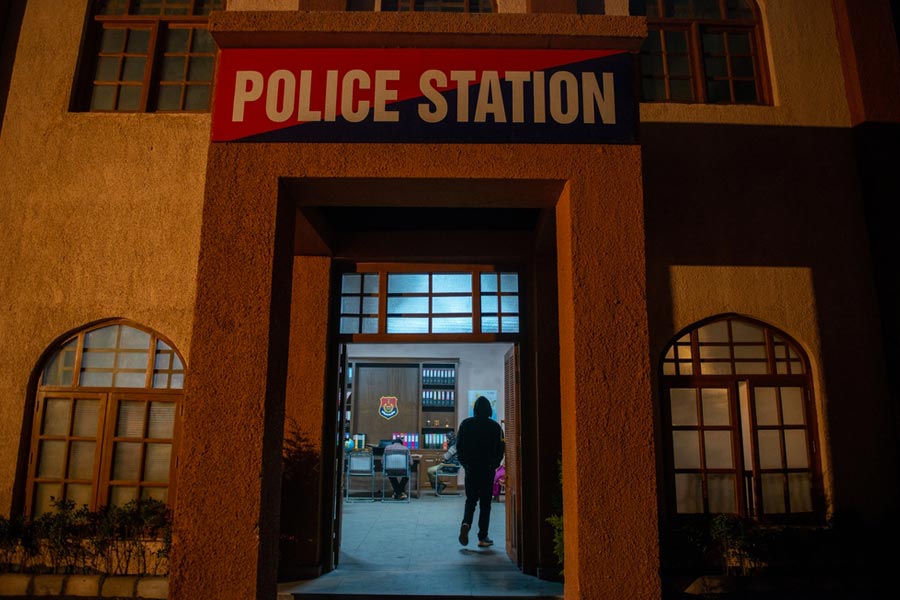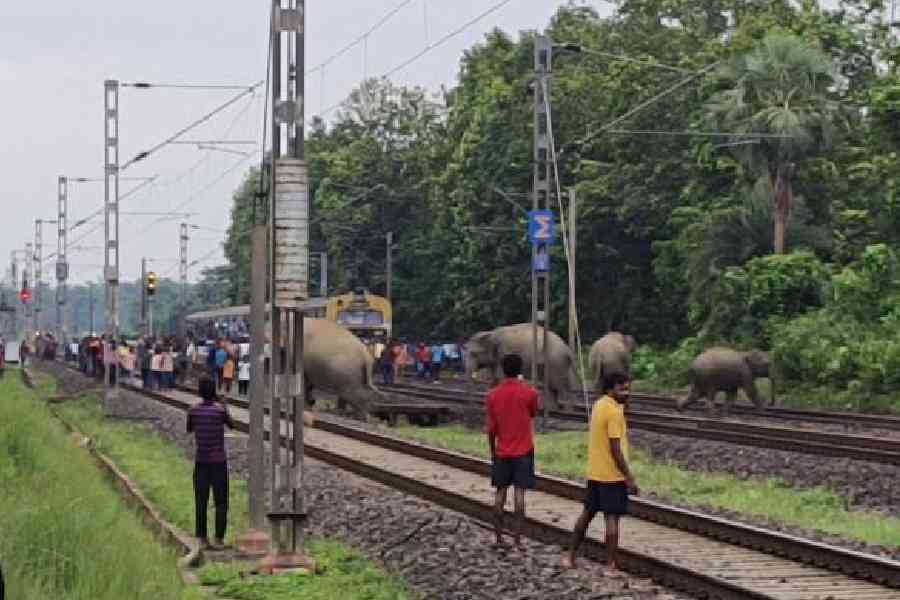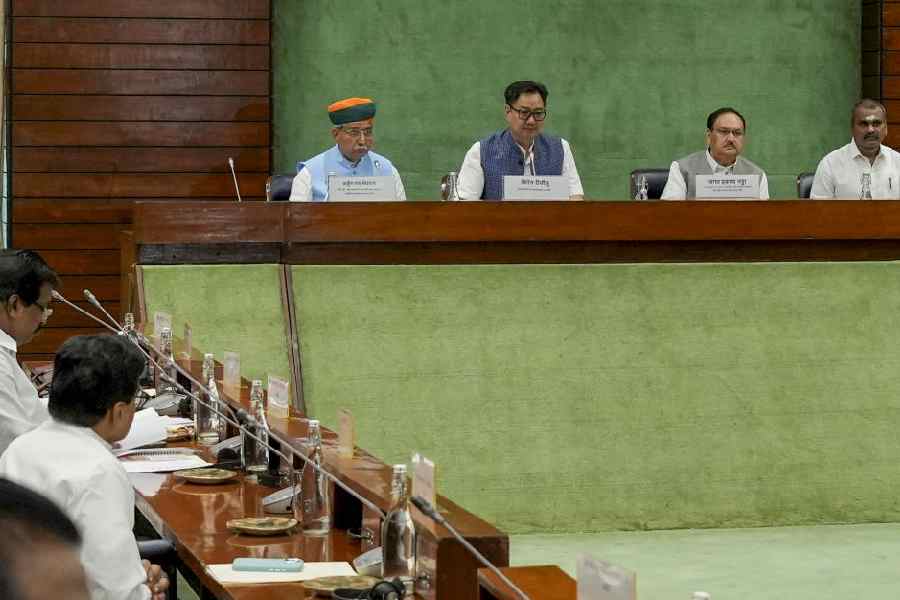 |
Sanjarpur (Azamgarh), Sept. 24: By now everybody knows “that village”; charting it through the lush post-monsoon fields off the Benaras-Azamgarh highway would be play for the blind.
It’s been leaping into national infamy, lead dateline in the papers for days now, persistently flashing on television. Police and the media have been running daily circles round it, and yesterday a raiding party from Delhi arrived — in 32 jeeps, no less, they tell you.
“Ekdum khaufnaak mahaul thaa,” insistent village voice Tariq Shafiq, who introduces himself as a social worker, says. “Chaaron taraf se gherabandi kar di aur gharon mein ghus gai, dhamki aur bandook se lais (It was a horrifying moment, they surrounded us on all sides and entered our homes, armed with guns and threats).”
You’ve come chasing a scene-of-crime trail, but you’ve descended into a scene suffused in raging victimhood. What they are calling the factory of terror from high platforms in New Delhi and Mumbai is indeed letting off fire. Only, it’s not coming off a bomb.
“Innocent boys have been killed in cold blood, they are being called terrorists without fair trial, our homes are desecrated, and what did they find? Nothing. Aur aap kyon aaye hain? Hamari badnaami pe zari lagane?” (And why have you come? To brocade our disgrace?)
Welcome to Sanjarpur. Home to Mohammed Atif Amin, “mastermind” of the Delhi blasts, and accomplices Sajid, Mohammed Saif and Shakeel.
The first two were killed in the Delhi encounter, the latter two are in custody. All are now proclaimed terror operatives with variously attributed links to Simi, Indian Mujahideen and, by implication, probably also to the Lashkar-e-Toiba.
Sanjarpur is intrinsic to the story that began to be told with that Jamianagar raid. But if it is fracturing that story rather than adding up, it is probably no fault of the cast of characters; they’re not on the same plot as the authors of the Jamia story. They would have none of it; indeed, they have a contrary plot. What the police call the unmasking of the truth, Sanjarpur calls the making of a conspiracy.
“These boys had all gone to study, they have all been coming home, they were playing cricket right here till the other day, and I was playing with them, all of them, Sajid was only 17 and he went to Delhi only a few months ago after passing school. He had recently come home because he was ill, when did he do all this bomb-making and planting?”
The youngster would only give his alias — Pappu — and refuses to be photographed. He is newly wary and he tells you that quite bluntly.
“Boys have been picked up just on the basis of phone calls they made, if we are village cousins or friends living in Delhi or Mumbai, would you not have each other’s phone numbers, would we not be calling each other? Phone karna aatankwaad hota hai kya?” (Is making a phone call terrorism?) Pappu works at a loom in Bhiwandi near Mumbai, but for the moment he is sticking home. “Kya pata kal humko bhi pakad ke terrorist bana den kyoki hum Azamgarh ke hain.” (Who knows tomorrow they might label me a terrorist because I am from Azamgarh.)
Zahid, elder brother to the slain Sajid, shivers at the prospect Pappu has conjured. “I could easily have been in that Jamianagar room with Sajid if I was visiting Delhi. I, too, could have been dead or arrested as a terrorist. How have they stuck these labels? My father and uncles are all doctors, my uncle is a judicial magistrate, we have been living here for generations, we are not about to light fire to our own soil. But if they do such things…”
Zahid stops himself short of sounding dire. But others couldn’t care less. “A home minister in trouble has chosen soft targets to save his chair, that’s all. Suddenly the police seem to know all conspiracies all over the country, suddenly they have become super-efficient. Isn’t there something strange in that? If innocent boys are treated like this, there will be a reaction, there is anger, it will get out,” says Aijaz Ahmed. “This village alone has dozens of boys studying and working in the cities, how must they be feeling as boys belonging here? Tell me, what would you be feeling?”
Elders and youngsters are milling around the dustbowl of a village square — angered, befuddled, lost. “All our boys in Delhi and Mumbai and Lucknow have switched their cellphones off out of fear,” says Shadab, father of Saif. “I know my son is in police custody, but so many others do not know where their sons are, there is no way to contact them, can you sense how we are feeling? Totally lost.”
They could have gone to the police and sought help. But that was another time, another day. Now they are the other side of the fracture.










